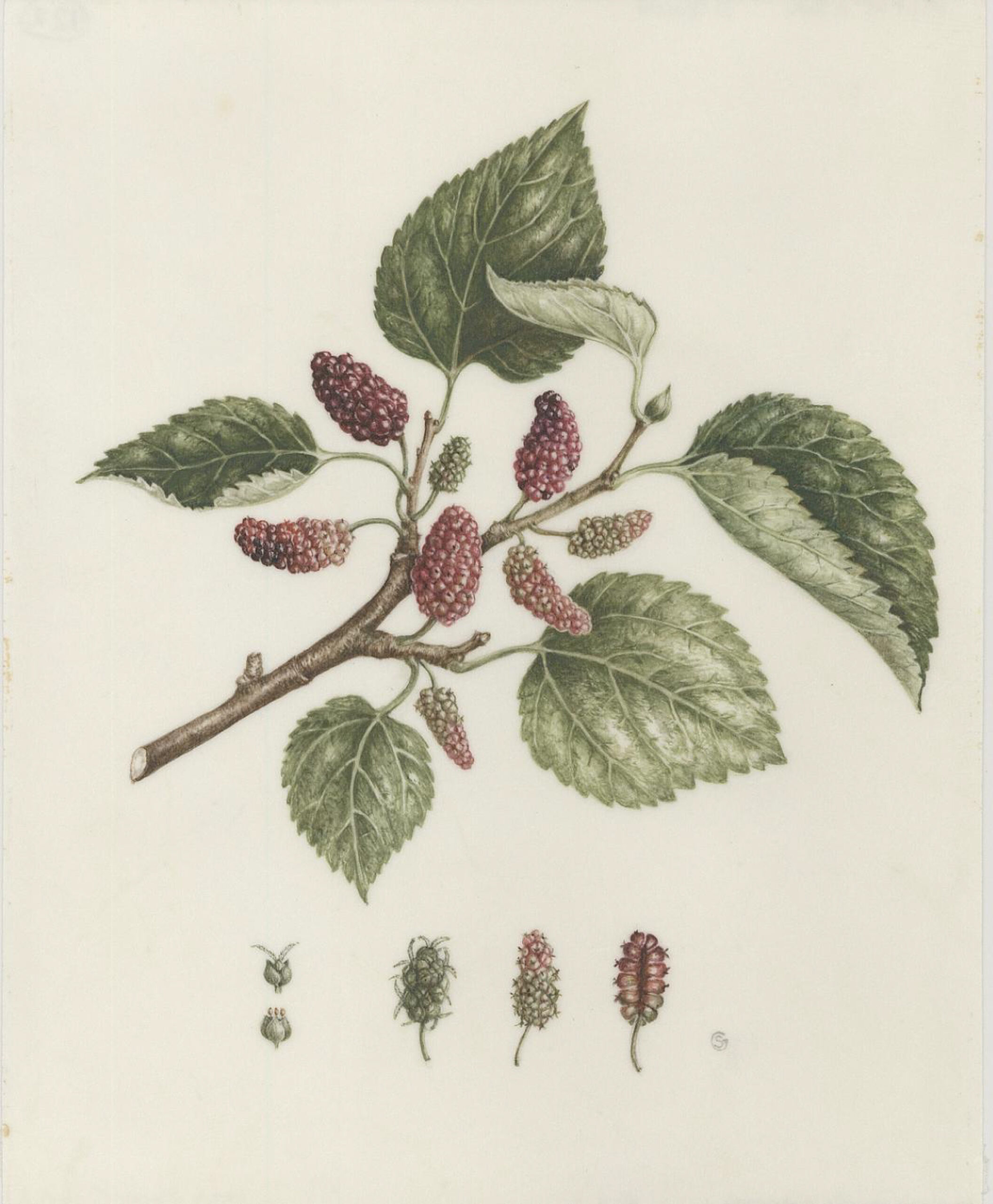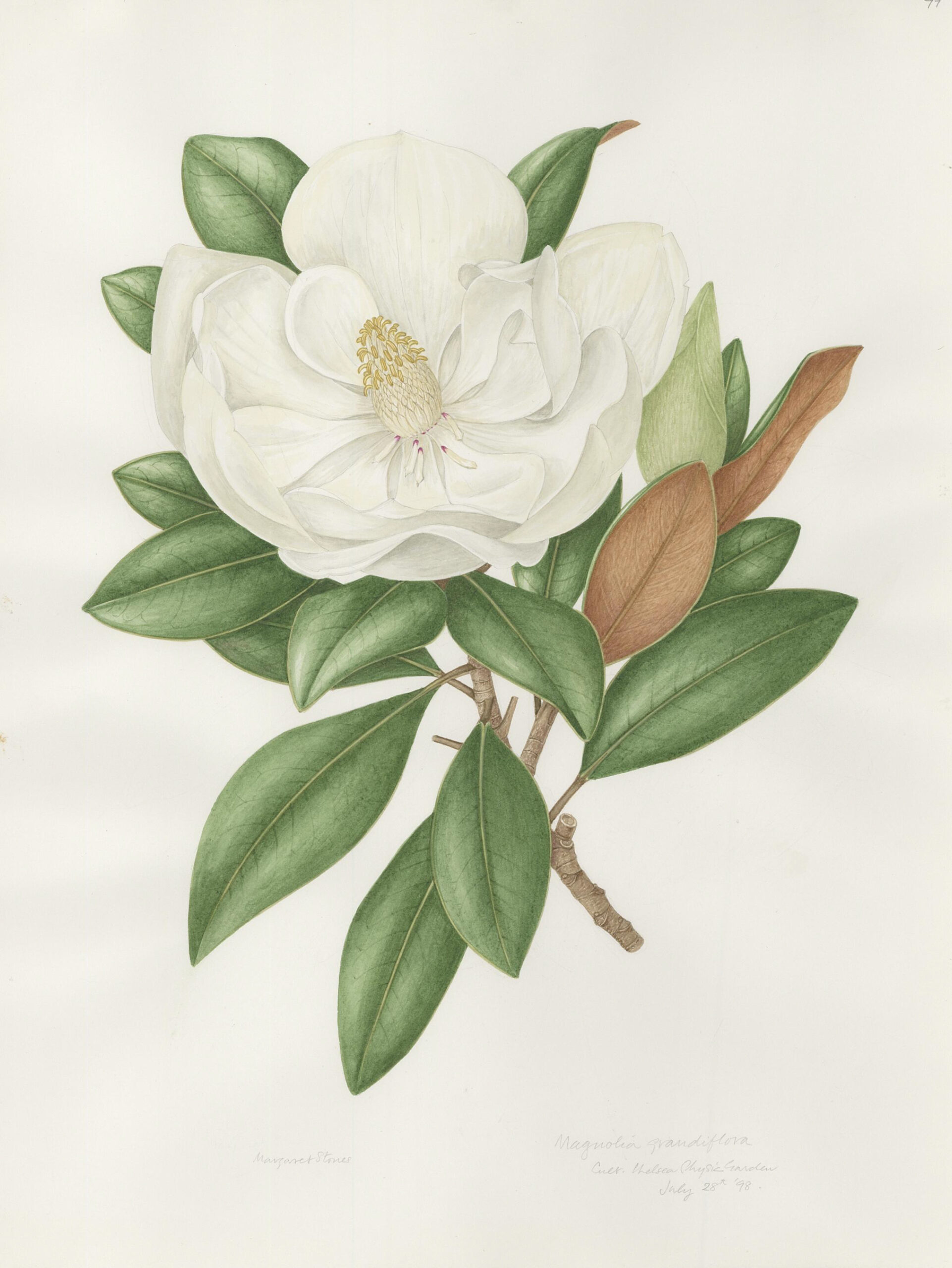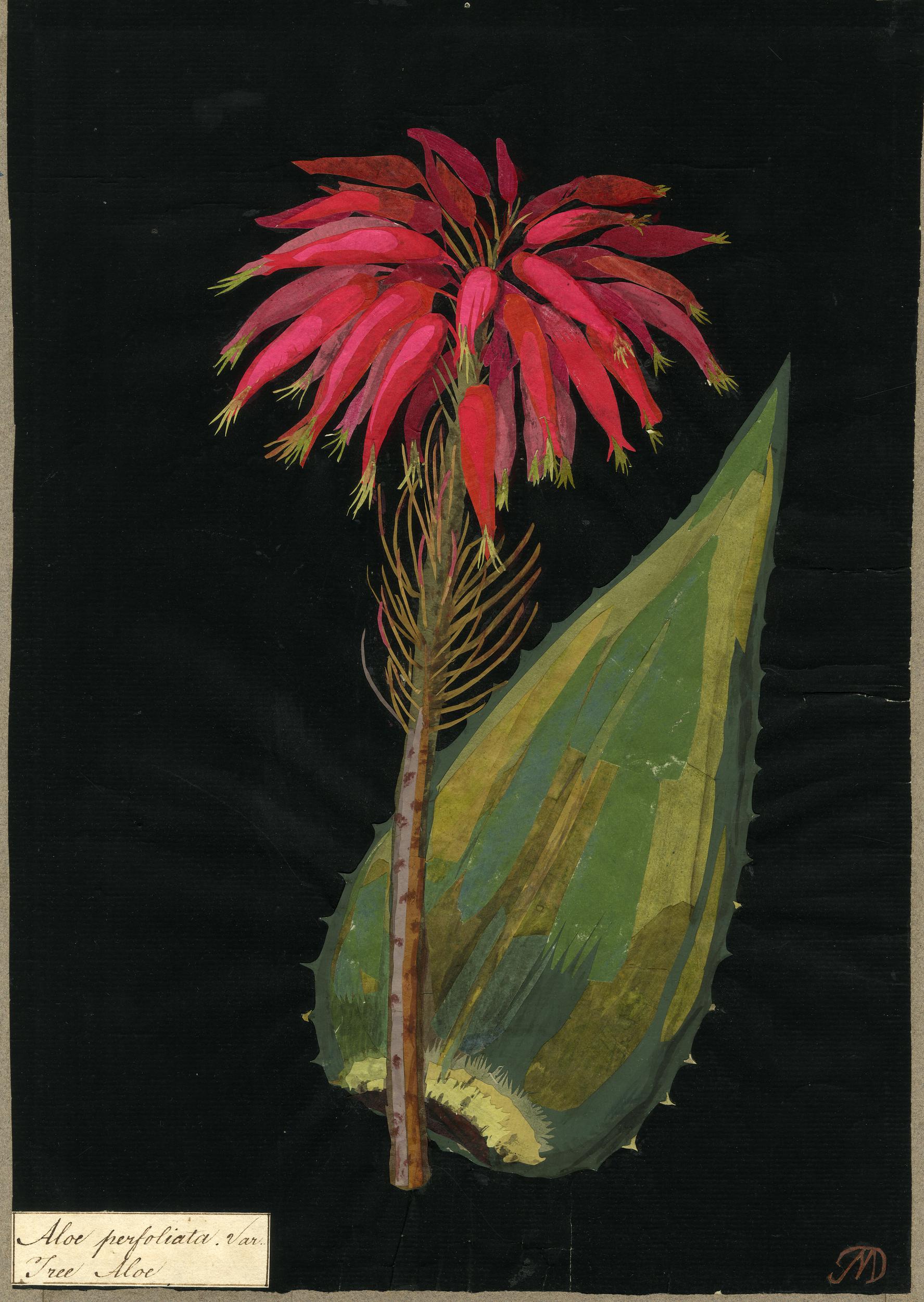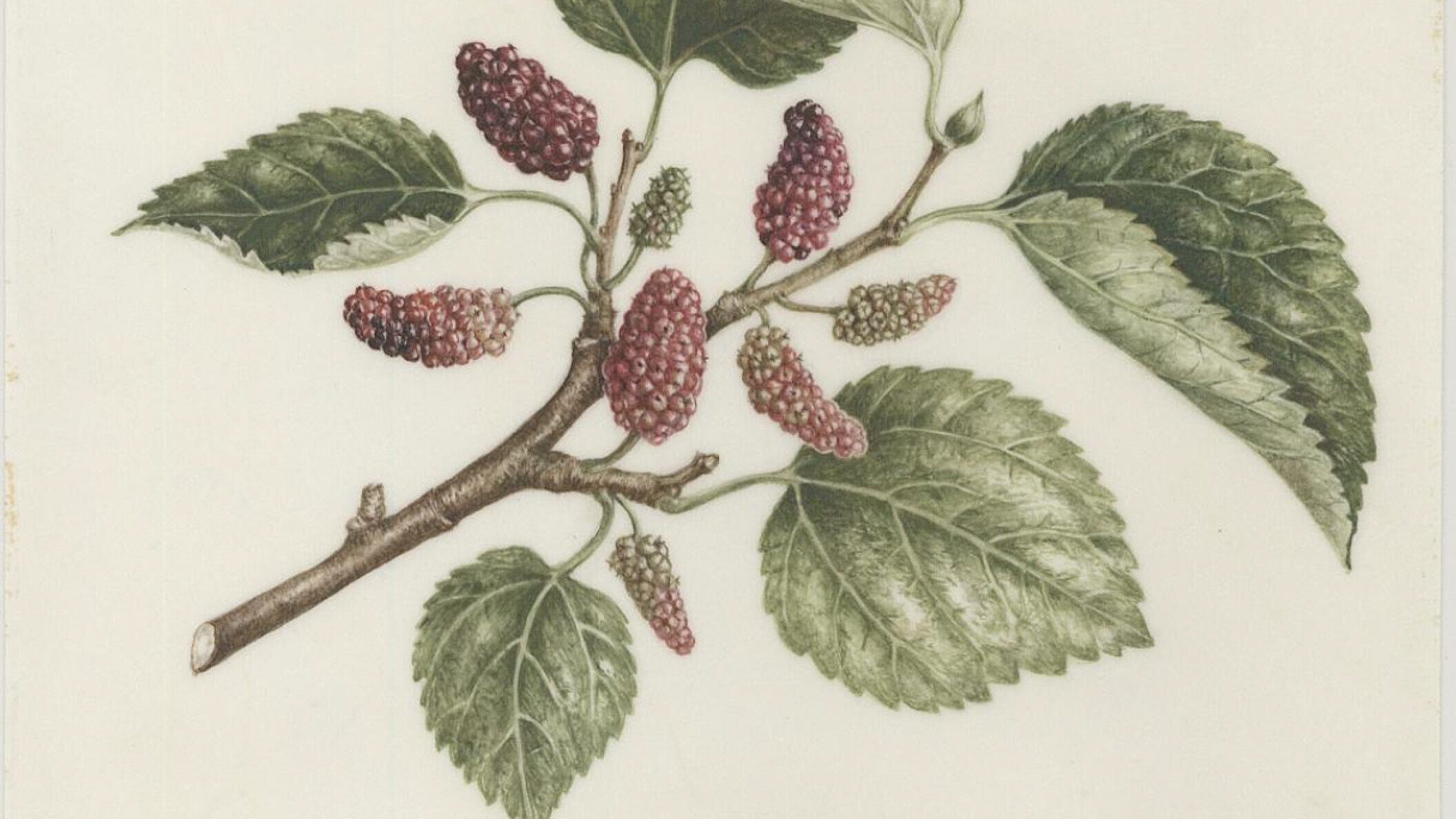From Chelsea to Georgia: sending seeds for the Empire
By Eve Barro, Assistant Project Curator at Chelsea Physic Garden
Every month, we will be labelling the plants mentioned in these blogs to bring our stories to life, so keep an eye out for the circular green labels during your next visit. A full list of these plants can be found at the end of the blog.
It all started with a story. That of Gossypium hirsutum (cotton) seeds sailing across the Atlantic from Chelsea to Georgia in the 18th century to start the American cotton industry. While this story revealed itself to be less straightforward (historical research showed that the American cotton industry was probably started using seeds coming directly from Central America), it triggered my curiosity and led me to investigate the bond between Chelsea Physic Garden and the experimental Savannah Garden in Georgia. In this month’s post, let me tell you the story of how Chelsea Physic Garden supported the creation of a garden on the other side of the Atlantic to fuel the Empire on its way to colonial expansion and medical self-sufficiency.
The Province of Georgia was founded in 1732 as a colony of British America (colonial territories of the British Empire). The council of trustees appointed to manage the colony decided to create a garden in Savannah to stimulate agriculture and experiment with medicinal, semi-tropical , and Mediterranean plants. That same year, the Worshipful Society of Apothecaries, that also owned Chelsea Physic Garden, joined the “Trustees for the Establishment of the Colony of Georgia in America” and influenced greatly the development of the experimental garden. In fact, it was Miller (Chelsea Physic Garden’s head gardener between 1731 and 1768) that recommended using the garden to grow medicinal plants (1). The trustees initially wanted to use it to introduce sericulture (silk farming) into Georgia, which they eventually did, supported by Chelsea Physic Garden. The colonial records show that between 1733 and 1735, Miller regularly sent Morus alba (white mulberry) seeds to support the nascent silk economy in Georgia (2, 3). The trustees hoped that silk would become “Georgia’s signature product” (4). There was also an attempt at growing other plants of economic importance such as Gossypium spp . (cotton). The colonial records dating from the 24 November 1733 describe how Miller sent “Two Papers of Egyptian Kali, or Pot Ash seed/ A Paper of Cotton seed./A Tub of White Mulberry Plants and Burgundy Vines/ All sent on board the Purysburgh, Capt. Fry, the same month” (3). The “paper of cotton seed” sent by Miller would have been of the species Gossypium hirsutum, which is now the most widely cultivated cotton species in the world. However, cotton cultivation in Georgia would not have been particularly successful as it is very labour intensive. The colony had initially banned the use of enslaved African laborers for economic rather than moral reasons (5, 6, 7). This meant that plants such as tobacco, indigo, rice, and cotton, requiring an intense labour force to be cultivated, could not be grown easily.

In the early days of the Savannah Garden , it was decided that growing medicinal plants would be profitable as it would enable the British Empire to breach Spanish monopoly in the growing of medicinal products key to colonial expansion (1). Indeed, at that time, the British usually had to buy plants from other nations (4). The goal was to make of Georgia a “British Garden of Eden” where useful plants difficult to grow in Britain could be found (3). The plan was to then send plants to Britain to support the Apothecaries’ effort towards self-sufficiency and commercial success. However, working towards this goal required to acquire some level of knowledge and experience. Chelsea Physic Garden was a perfect place for knowledge transfer to Savannah’s experimental garden as it had already developed a similar system, receiving plants of economic importance sent by plant collectors and experimentally growing them. Thus, gardeners at Chelsea Physic Garden sent plant specimens to Georgia but also knowledge on how to grow them. A letter sent by Miller in 1734/5 details how the Rubia tinctorum (madder) roots he was sending were to be taken care of:
“Sr,
At present I have no seeds or plants which I can think will be of use to the Colony of Georgia, except some roots of Madder. I have therefore sent you a box filled with these roots which I am convinced will be well worth propagating since we pay more than 100,000 £ per Ann for that Comodity to the Dutch and Brabanters. There requires no other care of these roots in their passage, but to give them a little water once in 8 or ten days in dry weather. When they arrive the root should be taken out of the box an[d] planted in rows two foot asunder and about ten inches distance in the rows, observing in Summer to keep them clear from weeds, which is all the culture they require.” (8)
Chelsea Physic Garden was seen as an appropriate model for the economic and practical development of the experimental garden in Savannah. Indeed, in the 1720s , gardeners at Chelsea Physic Garden had already started to develop plant cultivation with economic matters in mind. In the case of Rubia tinctorum (madder) root, Miller played an important role in its introduction, in Britain, as a commercial crop. At the time, European botanical gardens were “the largest laboratories of the day” and the plant specimens grown in them were intimately linked with imperial networks and endeavours and Chelsea Physic Garden was no exception (1). When Sir Hans Sloane acquired the Garden in the 1720s, he steered the Garden’s interest towards plants of the greatest benefit to medicine and the empire. Under Miller’s leadership, Chelsea Physic Garden also became a hub in long distance networks and botanical exploration. Based on their experience at Chelsea Physic Garden, the apothecaries proposed to implement expeditions in Spanish America. The objective was to grow the collected specimens in colonies such as Georgia, process them into medicines in London and distribute them across the British Empire. At the time, the Spanish Empire had a monopoly on the production of plants such as Cinchona pubescens (Fever tree ), used to treat malaria. Medicine manufacture came to be recognised as an important component of empires. Indeed, with the development of colonial warfare, health challenges were directly associated with power. During the colonial expansion period, diseases such as malaria actually accounted for a higher proportion of military death than battle injuries (1).
The cultivation of plants at the experimental garden in Savannah was not particularly successful in the end, due to a variety of obstacles ranging from environmental challenges to feuds between the main gardeners, lack of workers and thievery of crops by residents (4). However, its transatlantic relationship with Chelsea Physic Garden demonstrates the central role plants and herbal treatments played in colonial expansion.
Find the plants mentioned in this post during your next visit of the Garden!
- Plant 1: Cinchona pubescens (fever tree)
- Plant 2: Gossypium hirsutum (cotton)
- Plant 3: Morus alba (mulberry)
- Plant 4: Rubia tinctorum (madder)
Magnolia grandiflora (evergreen magnolia) and Coleoptera spp. (beetle)
When Magnolias evolved on earth about 95 million years ago (cretaceous period), commonly known pollinators such as bees and butterflies had not evolved yet. Beetles are thought to have been one of the first insects to establish pollen-based relationships with plants and, consequentially, to act as pollinators for some flowering plants (10). The pollination of magnolias by beetles thus goes back millions of years. Beetles visit magnolia flowers mainly to feed on their protein rich pollen and are attracted by the aromatic oils emitted by the flowers (a subtle citrus scent). To support their pollinating activity, beetles can display specific features that facilitate pollen collection and transport such as a hairy body and a “brush-like” mandible (11). Magnolia flowers developed a mechanism that favours their cross pollination by beetles: they trap beetles inside the flowers at night, closing the stigma (female reproductive system) and letting the beetles be covered in fresh pollen by the anthers. In the morning, the flowers open so that beetles can fly off to a different flower that has a pollen receptive stigma and pollinate it (12).


Mary Delany (1700-1788)
Garden designer and botanical artist Mary Delany regularly used Chelsea Physic Garden’s specimens to produce botanical illustrations. Mary Delany is renowned for her mastery of paper mosaics, a type of paper cutting and collage that she invented. At least eight out of the 985 collages that she made were of specimens supplied by Chelsea Physic Garden, including Aloe perfoliata. Sir Joseph Banks considered her work to be so detailed and accurate that, from it, he would “venture to describe botanically any plant without the least fear of committing an error” (6). Each plant in the Flora Delanica, her collection of paper “mosaicks”, was represented with scientific accuracy and labelled with the plant’s Linnean and common names, its collection number and date of creation. Her work defied the gendered boundaries of botanical classification which were deemed “unladylike” at the time as it was based on plant sexual reproduction (7).
To know more
Wilson, R. & Cowan, D. L. (2003). Trustee Garden. In New Georgia Encyclopedia. Retrieved Oct 6, 2016, from https://www.georgiaencyclopedia.org/articles/history-archaeology/trustee-garden/
References
- Dorner, Z. (2019). From chelsea to savannah: Medicines and mercantilism in the atlantic world. Journal of British Studies, 58(1), 28–57. https://doi.org/10.1017/jbr.2018.172
- Miller, R. M. (1969). The failure of the colony of georgia under the trustees. The Georgia Historical Quarterly, 53(1), 1–17. https://www.jstor.org/stable/40578924
- Candler, Allen. D. (1904). Colonial records of the State of Georgia / compiled and published under the authority of the Legislature. Franklin Printing and Publishing Co.
- Sweet, J. A. (2009). A misguided mistake: The trustees’ public garden in savannah, georgia. The Georgia Historical Quarterly, 93(1), 1–29. https://www.jstor.org/stable/40585113
- Baine, R. M. (1995). Indian slavery in colonial georgia. The Georgia Historical Quarterly, 79(2), 418–424. https://www.jstor.org/stable/40583244
- Wood, B. (1974). Thomas stephens and the introduction of black slavery in georgia. The Georgia Historical Quarterly, 58(1), 24–40. https://www.jstor.org/stable/40579666
- Wood, B. (2021). Slavery in Colonial Georgia. New Georgia Encyclopedia. https://www.georgiaencyclopedia.org/articles/history-archaeology/slavery-in-colonial-georgia/
- Coleman, K. (1982). Philip Miller to Harmon Verelst, Jan. 23, 1734/5, Chelsea: Sending some madder roots for Georgia. In Colonial Records of the State of Georgia: Vol. 20: Original Papers, Correspondence to the Trustees, James Oglethorpe, and Others, 1732–1735. The University of Georgia Press.

